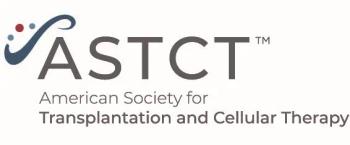
ASCO Value Framework Challenging to Apply in CLL
Although the ASCO Value Framework is an important step to quantify the value of cancer therapies, a new study has found that it has essential limitations for its application in clinical practice for the treatment of chronic lymphocytic leukemia.
Although the American Society of Clinical Oncology (ASCO) Value Framework is an important step to quantify the value of cancer therapies, a new study has found that it has essential limitations for its application in clinical practice for the treatment of chronic lymphocytic leukemia (CLL). These limitations include a lack of clinically relevant validated thresholds for net health benefit (NHB) and the lack of incorporation of grade 5 toxicities/treatment-related deaths into its methodology, according to the study
“There is an evolving movement to quantify value for pricing purposes, value-based insurance design, and value-based physician reimbursement models,” wrote Erlene K. Seymour, MD, of Karmanos Cancer Institute/Wayne State University, and colleagues. “We would suggest that to optimize the usefulness of these value frameworks, direct comparator trials using two regimens with strong efficacy be highly encouraged.”
The ASCO Value Framework was designed to help define the clinical benefit of a therapy to patients by incorporating three concepts of quality care: clinical benefit, toxicity, and cost. In this study, Seymour and colleagues used the revised ASCO Value Framework to compare the NHB and cost among regimens used to treatment CLL.
They reviewed the current National Comprehensive Cancer Network (NCCN) guidelines for CLL and calculated the NHB and cost within Medicare for all studies that could be analyzed using the Value Framework.
Although they screened 49 studies, only 10 studies (20%) could be evaluated. In these 10 studies there were 17 different comparisons among 14 different regimens. Six of the studies used “less potent” control arms considered to be least-preferred NCCN regimens.
Clinical benefit score is indicative of the benefit of an experimental regimen against the control, with the higher the score the better the efficacy compared with the control. Toxicity scores reflect the adverse effects of an experimental arm compared with a control with a higher score indicating a more toxic experimental regimen compared with standard of care. The NHB score was calculated by the clinical benefit score minus the toxicity score plus bonus points for treatment-free interval, quality of life, and palliation of cancer-related symptoms.
When comparing regimens studied against the control arm, ranking NHB scores were comparable to their preference in the NCCN guidelines.
“However, validated thresholds to define clinically meaningful high vs low values are still needed,” the researchers wrote.
NHB scores varied depending on which variables were used: overall survival, progression-free survival, or overall response rate.
“Additionally, bonus points are hard to incorporate, because ideally, we would use variables that were reported within the same study,” the researchers wrote. “Often variables such as quality of life are gathered but not reported. We would strongly encourage investigators and sponsors to take a more uniform approach in reporting the clinical variables needed to optimize comparisons made using the framework.”
Finally, treatment-related deaths were not weighted in the toxicity scores.
“The toxicity score methodology failed to appreciate a difference between bendamustine/rituximab and fludarabine/cyclophosphamide, and rituximab, suggesting that incorporation of treatment-related mortality and placing of higher weights on certain toxicities are needed to decipher clinically appreciated differences,” the researchers wrote.
Based on these results, more work is needed when designing and reporting clinical trials to translate these value frameworks into everyday clinical practice.
Newsletter
Stay up to date on recent advances in the multidisciplinary approach to cancer.



















































































